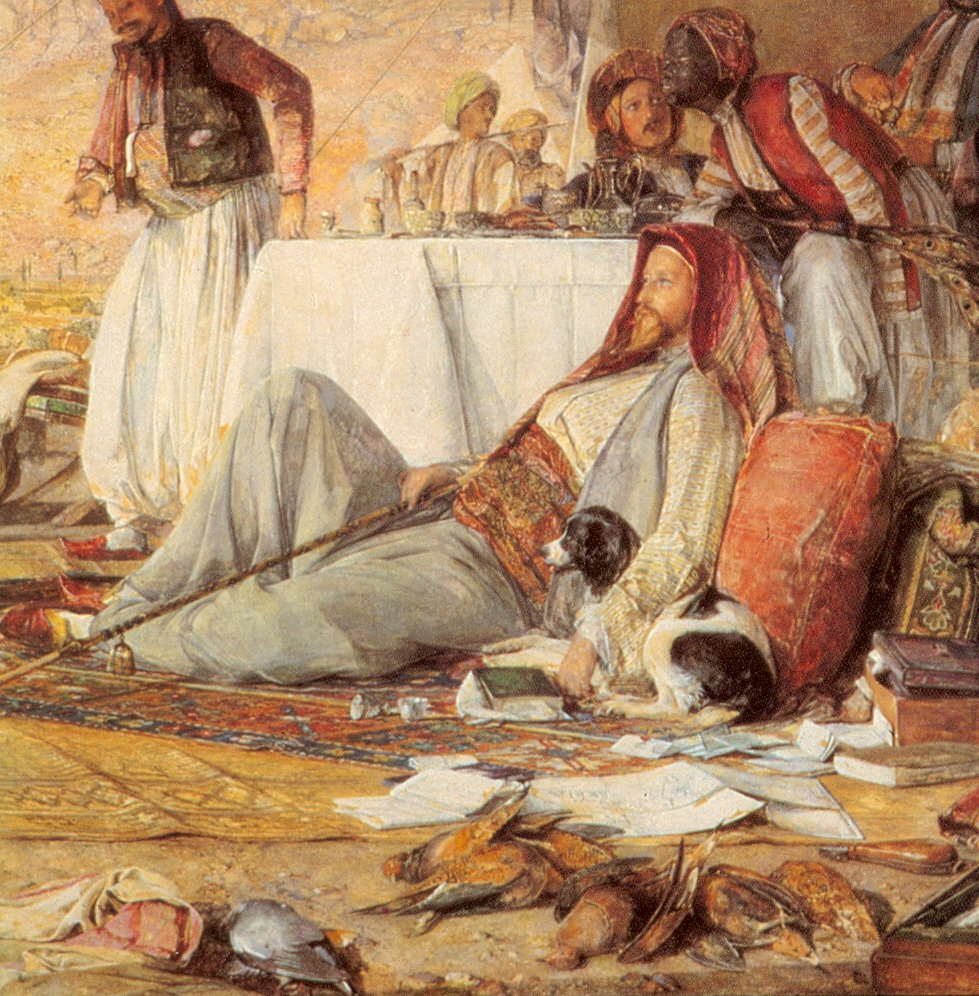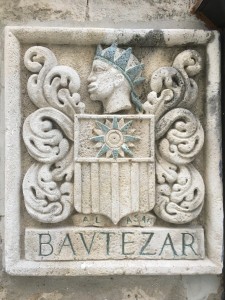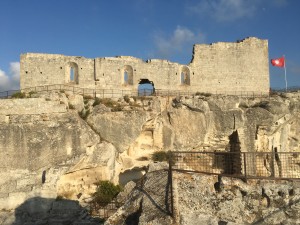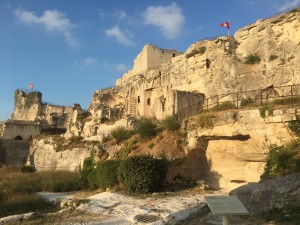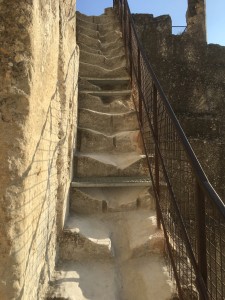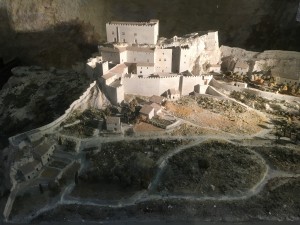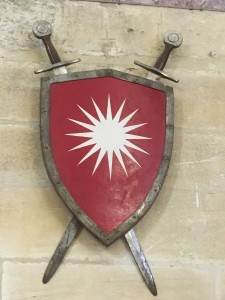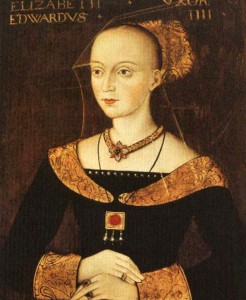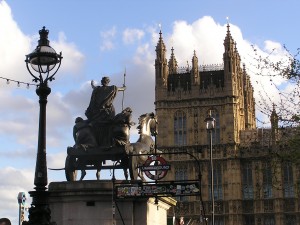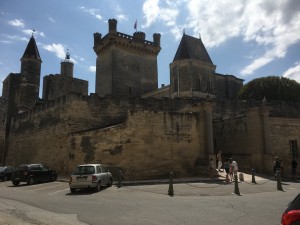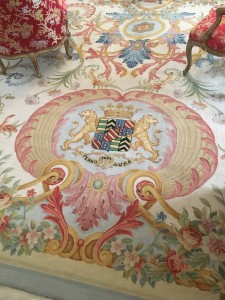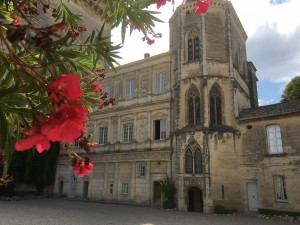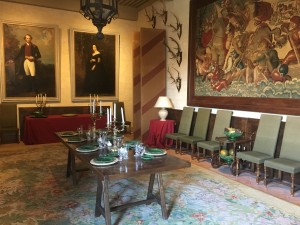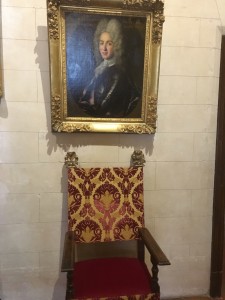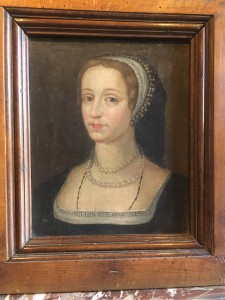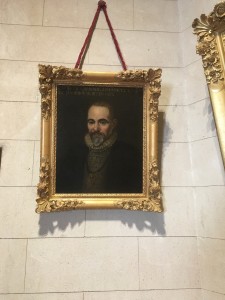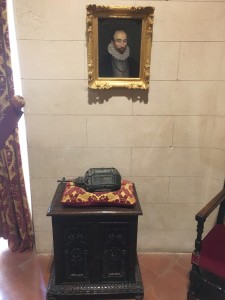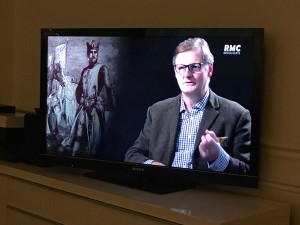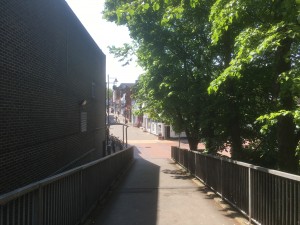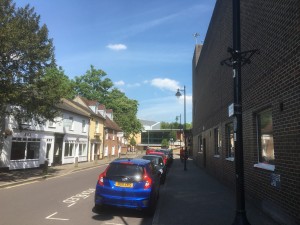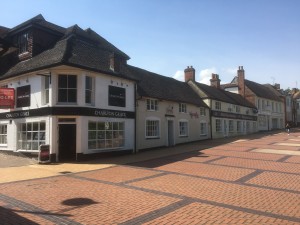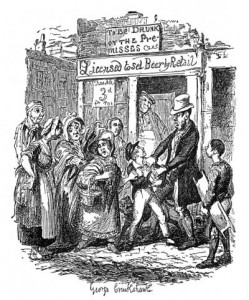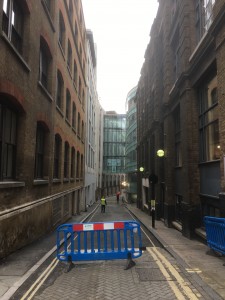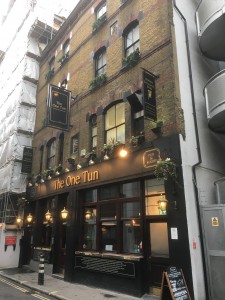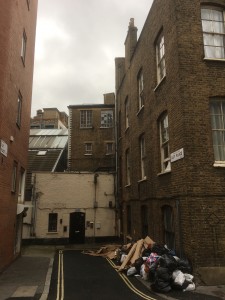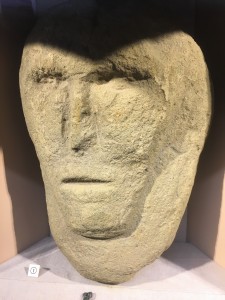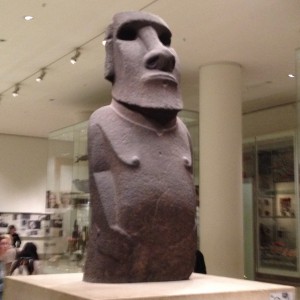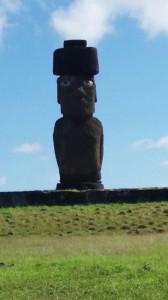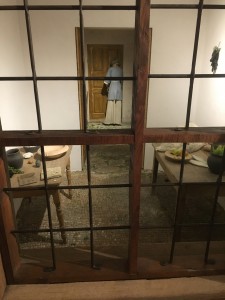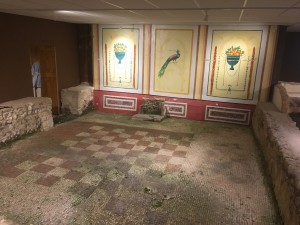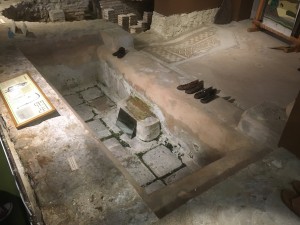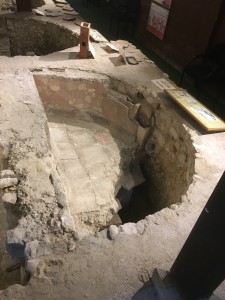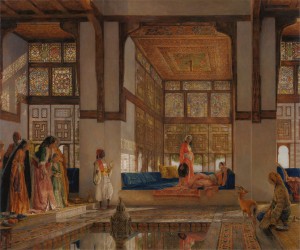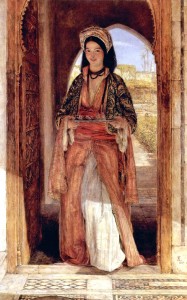My paternal grandmother, though born and brought up in Hong Kong, was a Highland Scot, a McEwen from East Perthshire. We wear McEwen regalia on the rare occasions that demand it, such as my brother’s appearance as a pageboy at our aunt’s wedding, when he was bedecked in natty trews in the Hunting McEwen tartan. A few family traditions were preserved, such as patronage of McEwen’s of Perth, a very old-fashioned department store in John Street (now sadly defunct), and an unhistorical obsession with orthography (never McEwan with an ‘a’). From ‘Grandpa McEwen’ we seem also to have inherited great height. My father stood at 6’4, my son at 6’3, myself at 6’2.
I also vividly remember from childhood my great-aunt Anne’s account of a meeting with her maiden aunt in Scotland. It must have taken place in 1939. On hearing that Anne was engaged to a ‘Sassenach’, Aunt Kate stiffened. ‘Then you’re nae niece of mine.’ Anne persisted, politely enquiring what their ancestors had been. Kate’s reply was equally forthright. ‘Why, cattle-stealers of course!’ She must have had a soft heart, as she was later to leave some fine linen to my grandmother and instructed that a ‘kilt pin’ should be provided for her half-English daughter (my aunt still has it: a silver thistle with an amethyst flower).

Richard Todd as Rob Roy. Somehow I acquired this handsomely-bound, already vintage book as a child, presumably after seeing the film. My father later met the dashing Todd and described him as ‘knee-high to a grasshopper’.
I lapped up Aunt Anne’s story, as I was already developing a passion for Scottish clan history. Aged no more than six, I had been taken to the cinema to see the 1953 Disney film, Rob Roy (hardly the ‘latest release’, but nobody minded in those days). There is a thrilling scene in which Rob Roy, played by Richard Todd, evades English troops by leaping across a waterfall. That scene in particular, along with the outlandish outfits and the claymores, had sparked in me a romantic fascination. It was to be fuelled in the ensuing years by D.K. Broster’s Flight of the Heron, John Prebble’s Culloden and the writings of Iain Moncreiffe.
Aunt Kate’s memory of family brigandage, activity that must have been relatively recent (three generations is the usual reckoning), had also left me enchanted and intrigued. What is the truth of it? I now know that Kate’s father, my great-great-grandfather John McEwen (1842 – 1910), farmed at Muirhead in Kinclaven, where he was the tenant of Major-General Richardson Robertson of Tullybelton and Ballathie. The family were keen churchgoers and appeared to be perfectly respectable.
Muirhead is marked on old maps but has since been demolished. It was said to have consisted of ‘four farm steadings with a few acres of land attached to each’. Apart from the grand Ballathie House, the parish of Kinclaven was made up of a church and manse and a scattering of similar homesteads. It occupied an isolated loop in the River Tay (there was no bridge in those days), but fortunate guests at Ballathie were treated to the finest autumn salmon fishing in Scotland.
John, who settled at Muirhead on his marriage to Ann Duncan Gardiner, the daughter of the house, had been born further up the Tay at a place called Ballinreich, the steading in the parish of Little Dunkeld that had been farmed by his father Alexander, as it had also been by his maternal grandfather, John Fisher.
Baptised at neighbouring Dull on 12 September 1808, Alexander was the younger son of Donald McEwen of Aberfeldy and his wife Elizabeth (or Elspet) Anderson, who were married at Dull in 1800. With Donald, who may have been born in the immediate aftermath of the 1745 rebellion, the line disappointingly fizzles out.
On this truncated family tree, a name stands out, that of MacGregor, that does indeed launch us into an authentic world of brigandage. John Fisher’s wife, Catherine Campbell, who married from Achtar in Fortingall in 1798, was the daughter of a certain Elizabeth MacGregor. The implication, which I would never have guessed, is that the real Rob Roy, my boyhood hero, most celebrated of all the MacGregors, was a putative kinsman!
Scottish clans are dynastic, extended families in the most literal sense (with a few strays adopted here and there). Clan Gregor was one of the proudest. Their Gaelic motto, S’rioghal mo dhream, means ‘royal is my blood’. They are believed to descend from the hereditary Abbots of Glendochart, who were always men of Celtic royal race. MacGregors maintain that they were of the line of Alpin, King of Argyll, who died in 841. In honour of him, the chief is known as An t’Ailpeanach.
The name-father of the clan was, however, a fourteenth-century Gregor ‘of the Golden Bridles’. Generations of his line held their beleaguered lands in Glenstrae by the sword, an inconvenience to the neighbouring Clan Campbell. In 1519, the powerful, canny Campbells contrived to establish their own nominee, a cadet who was ‘not righteous heir’, as Chief. The head of the dispossessed line, Duncan MacGregor of Ardchoille, was forced to lead his loyal clansmen into the hills, where he became an outlaw. The years of freebooting, raids and murderous mayhem began, many of the family being hanged or meeting other violent ends. Holed up in their fastnesses, braving the snows and ravening wolves, they were like the fictional Doones on Exmoor.
A document of c.1587 refers to them as ‘the House and Gang of Gregor MacIain’, but the landless Gregarach had acquired a far more romantic name. They were called ‘the Children of the Mist’, although the Gaelic might equally translate as ‘the Fog Folk’ or, some say, ‘Sons of the Wolf’. Soon, even the usurping chiefs were implicated in the brigandage, to the extent that in 1603, after a murderous attack on the Colquhouns, ‘the whole Clan Gregor were outlawed and the Name of MacGregor proscribed on pain of death’. The edict of James VI, declaring the name to be ‘altogidder abolisheed’, was confirmed by an Act of the Scottish Parliament in 1617.
In the early days of their outlawry the Gregarach were regularly pursued by blood-hounds, the fearful conn dubh, until the last of these was shot by their chieftain in 1624. The place (near Lochearnhead) is still called Meall a Mhadaidh, the Hill of the Wild Dog, and the long-barrelled ‘Fuzee’ or gun that he used has been passed down to the present chief. Recalcitrant MacGregors, if caught, could expect immediate execution. Their wives would be stripped bare, branded and whipped through the streets, then packed off to the American colonies as indentured slaves, along with their children.
There was a brief reprieve between 1661 and 1693, when the persecution resumed. Absurdly loyal to the wrong-but-romantic House of Stuart, they fought for James II at Killiecrankie, turning out again for the ‘Old Pretender’ in 1715 and for the ‘Young Pretender’ in 1745. Indeed it was Major Evan MacGregor, Bonnie Prince Charlie’s aide-de-camp, who fired the first shot at Prestonpans. Twenty-two MacGregors were wounded that day and one killed, for which Prince Charlie regaled the whole clan to dinner that evening, the officers sitting with him at a table set ‘upon the middle of the field’. In 1746, the Gregarach were fighting in Sutherland and missed the slaughter at Culloden, marching home past Finlairg Castle with colours flying and heads held high. It was reported with great satisfaction that the garrison, a regiment of militia recruited from the bullying Clan Campbell, ‘durst not move more than pussies’.
The outlawed Gregarach had been obliged to conceal their identity behind assumed or imposed names, including such oddities as ‘Beachly,’ ‘Landless’, ‘Telford’ and ‘Skinner’. Their chieftains called themselves Murray. Some branches were to keep these adopted names permanently, like the one calling itself Stewart, from which the Marquesses of Londonderry (including the Foreign Secretary Lord Castlereagh) are thought to descend. Others fled abroad. The then chieftain’s brother, James, emigrated to America, only to be scalped by angry Indians. There was even a line of martial ‘Greigs’ who became ennobled in Russia.
‘Rob Roy’ MacGregor, born at Glengyle in 1671, used the alias of Campbell, his mother’s name. Heavily romanticised by Sir Walter Scott in his novel Rob Roy (though he makes only fleeting appearances), not to mention Disney, he was, in reality, a fearsome and rather enthusiastic brigand (and a fine swordsman with abnormally long arms), who once led a terrifying raid on Dumbarton, though he was pardoned in time for a peaceful death at Balquhidder in 1734. ‘Don’t Mister me nor Campbell me!’ Scott has him say. ‘My foot is on my native heath, and my name is MacGregor!’
The persecution of the MacGregors came to an end in 1774, their legal status restored. General Sir John Murray was at last recognised as the ‘righteous chief’, MacGregor of MacGregor. Though they had been reduced for long years to the status of cattle thieves, the pride of the clan was undiminished. The chief petitioner had been a certain Captain Gregor Drummond, nicknamed Boidheach, ‘the beautiful’, a MacGregor of the chiefly line who, like all his family, had been obliged to live under a pseudonym. In 1743, King George II had commanded that three soldiers of the Black Watch be sent to St James’s for review. The then Private Drummond had been one of the men selected. The story is told that the soldiers gave perfect satisfaction to His Majesty, who handed them each a guinea. These ‘they gave to the porter at the palace gate as they passed out,’ thinking that the King ‘had mistaken their character and condition in their own country.’ S’rioghal mo dhream!
The MacGregor woman from whom I descend was born in the period of persecution. It has been said of the MacGregors that ‘they are perhaps the only clan who can be reasonably certain that all who bear the surname are genuine scions of the ancient chiefly blood, although some branches have never yet resumed it.’ The Clan Gregor Society publishes a list of the known aliases which, remarkably, includes ‘Campbell’, ‘Fisher’ and ‘MacEwin’, three of the names that figure on my ‘tree’. Who more likely to marry an outlaw than a fellow outlaw? Might Donald McEwen and his neighbour John Fisher at Little Dunkeld have themselves been MacGregors who had, for the sake of convenience, retained their aliases, yet proudly passed on the cattle-raiding memory to their children and grandchildren?
The McEwen tartan that we wear is a variant of the Campbell one. The MacEwens of Otter, on Loch Fyne, had themselves been dispossessed by the Campbell chief in the fifteenth century. The chiefly line long ago disappeared without trace. The clan badge is that of the McEwens of Bardrochat in distant Ayrshire, who, as Moncreiffe concedes, ‘may have taken their name from a completely different Ewen’. An end to such nonsense! The wearing of tartan and Highland dress was banned for civilians in Scotland after the ’45. After the lifting of that prohibition in 1782, they were somewhat artificially revived. The tartans and Highland dress of today are mostly nineteenth-century inventions. Yet the red-and-black check design known as ‘Rob Roy’s Tartan’ – the lumberjack tartan – is one of the oldest and most appealing. Henceforth I shall proudly bear the tartan and badge of MacGregor – trusting that Aunt Kate would not disapprove.
[Iain Moncreiffe and David Hicks, The Highland Clans (London, 1967), especially pp.19, 30, 99-100, 209-11; James D. Scarlett, The Tartans of the Scottish Clans (Glasgow and London, 1975); Burke’s Peerage and Baronetage, II (London, 2003), article ‘MacGregor of MacGregor’; http://www.clangregor.com/membership/sept-family-names/. Information on the McEwens of Muirhead from scotlandsplaces.gov.uk includes The Perthshire Ordnance Survey Name Books, 1859-62, Perthshire Vol.40, Communion Roll for Kinclaven, 1880-2 and Kinclaven Kirk o’ the Muir Parish Records. The relevant Census Returns and records of baptism and marriage are available on scotlandspeople.gov.uk.]
Detail from John Frederick’s Lewis’s A Frank Encampment, one of my favourite pictures. It depicts the then Lord Castlereagh on his Oriental tour of 1842. He is the image of the unruffled English gentleman, able to retain his composure and comforts in the most unpromising conditions. In fact his ancestry was mainly Irish and Scottish. The family’s prospects had improved considerably when they adopted the name ‘Stewart’ in place of ‘MacGregor’.

